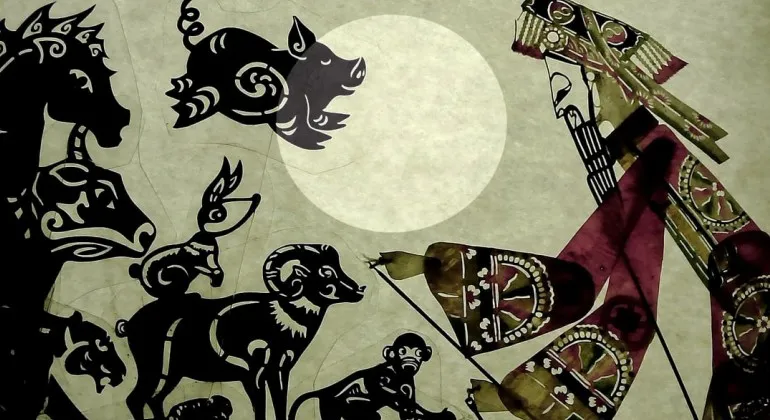As the Year of the Dragon approaches, let’s embark on an exciting journey into the enchanting world of the Chinese Zodiac and its captivating folklore filled with mythical stories, legendary creatures, and rich cultural significance—a perfect way to introduce kids to Chinese culture.
Picture this: a magical race that determined the order of twelve animals, each representing a year in a captivating lunar calendar. These animals aren’t just any creatures but part of an ancient legend passed down for generations.
From families choosing special names for newborns to celebrating weddings on auspicious dates, the Chinese Zodiac still plays a unique role in Chinese customs and traditions. But it’s not just about astrology; it’s a fascinating blend of mythology, folklore, and artistry.
Don’t forget to explore our articles on the art of paper cutting and children’s books inspired by Chinese Zodiac animals to dive even deeper into this incredible culture!
Share your thoughts in the comments below, and let the adventure begin!
The Great Race
Once upon a time, in a land filled with magic and wonder, the Jade Emperor, ruler of the heavens, decided to have a grand race. He wanted to choose twelve animals to represent the years in his new calendar. “Whoever arrives first at my heavenly gate will earn a special place in the Zodiac,” he declared.
Excitement buzzed across the land. Animals of all shapes and sizes dreamed of being among the chosen twelve. The day of the race arrived, bright and beautiful. A mighty river lay between the animals and the Emperor’s heavenly gate. How would they cross this vast, swirling river?

The clever Rat, small but quick-witted, had a plan. He asked the kind and sturdy Ox for a ride across the river. “Of course, little friend,” said the Ox, and they set off. As they neared the other side, the Rat leaped from the Ox’s back, scurrying ahead to arrive first. Thus, the Rat became the first animal of the Zodiac.
The Ox, steady and reliable, stepped onto the shore as the second animal. The Tiger, powerful and brave, fought the currents and arrived third. The agile Rabbit, having hopped across floating logs, came fourth.
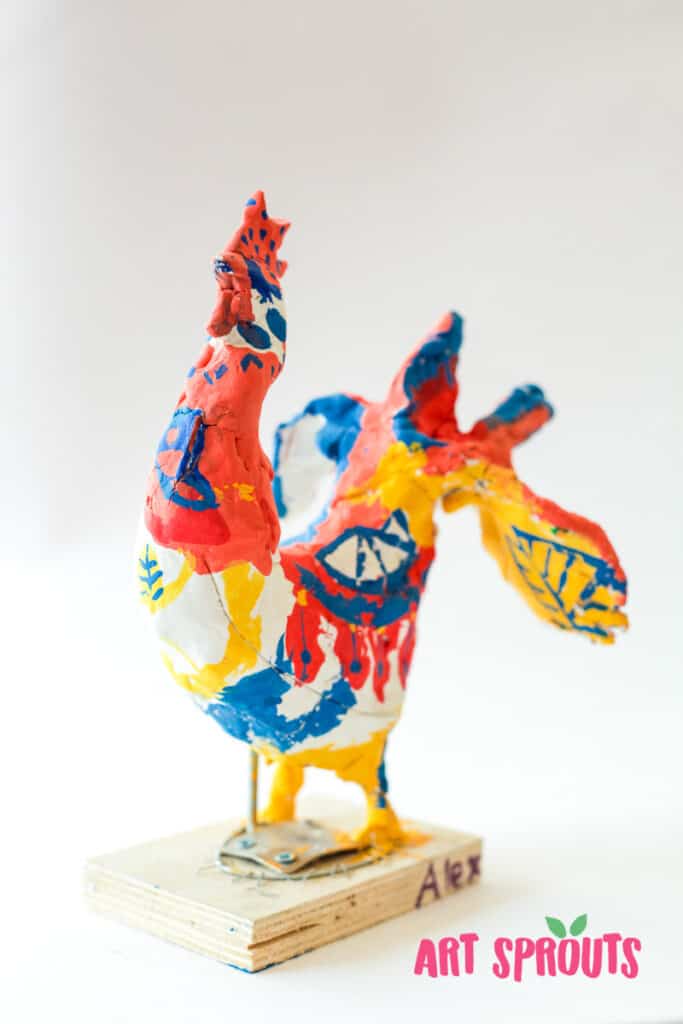
Then, a surprising sight! The Dragon swooped down to the fifth spot. “Why are you fifth, Dragon, with your mighty wings?” the animals wondered. The Dragon explained, “I saw villagers needing rain, so I stopped to help them. And on my way here, I saw the Rabbit struggling on the logs, so I puffed a gentle wind to help him land safely.”
Following the Dragon, the Horse galloped towards the finish line. But hidden on the Horse’s hoof was the sneaky Snake. As they reached the shore, the Snake startled the Horse, slithering ahead to take the sixth spot, while the Horse came in seventh.
Next came the Goat, the Monkey, and the Rooster, all helping each other to cross the river. Their teamwork paid off as they arrived eighth, ninth, and tenth. The joyful Dog, who had stopped to play in the water, came eleventh. Lastly, the Pig, who had stopped for a snack and a nap, arrived, huffing and puffing, in the twelfth spot.
So, the twelve animals of the Chinese Zodiac were chosen. Each year connected to an animal, each with its unique story and traits. Today, children across China learn about these animals and their legendary race to the heavens.
The Ancient Origins and Significance of the Chinese Zodiac
The Chinese Zodiac, also known as Shengxiao, is an ancient system that dates back over 2,000 years. It originated during the Han Dynasty (206 BC – 220 AD).
Historically, the Chinese Zodiac was used to record years in a 12-year cycle, each year represented by a different animal. This cyclical concept helped people mark the passage of time, record historical events, and even predict fortunes. It wasn’t just a calendar but a tool for guidance in life decisions, from farming to marriage.
The twelve zodiac animals are also associated with one of the five elements – Wood, Fire, Earth, Metal, and Water. These elements, stemming from ancient Chinese philosophy, are believed to add distinct characteristics and influence the personality traits of individuals born under their respective signs. For instance, someone born in the year of the Metal Rat is thought to possess qualities from both the Rat sign and the Metal element, such as intelligence, adaptability, and strength.
The combination of the twelve animals and the five elements creates a 60-year cycle, where each specific animal-element pair is unique in its attributes. This comprehensive system reflects the Chinese understanding of the universe’s harmony and balance, further enriching the cultural significance of the Zodiac.
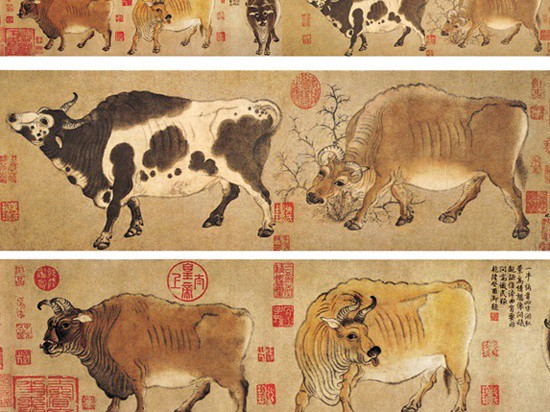
Role in Family and Societal Customs
The Chinese Zodiac plays a meaningful role in the tapestry of family and societal customs. Families often turn to it for guidance in selecting auspicious dates for weddings, the grand opening of businesses, and even when choosing names for newborns. There’s a belief that a name resonating with the positive traits of a child’s zodiac sign can bring good fortune.
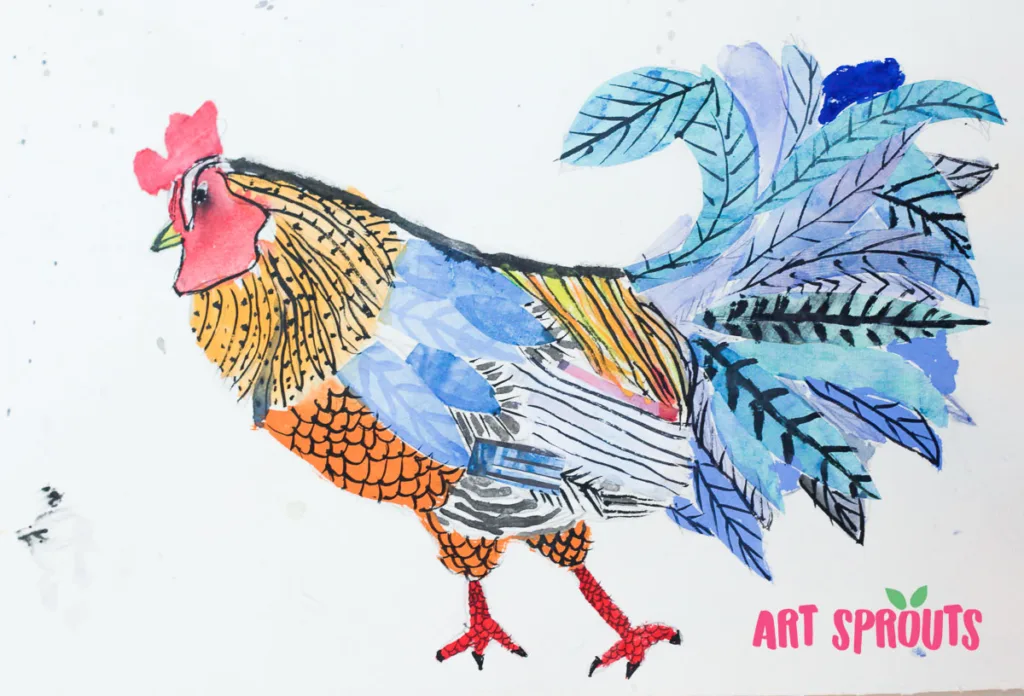
In matters of the heart and relationships, some believe that certain animal signs are more compatible than others. It’s a bit like cosmic matchmaking!
Each zodiac animal is thought to bestow specific personality traits and fortunes on those born in its year. For example, Dragons are associated with power and luck, while Goats are known for their creativity and peaceful nature. Many people check their zodiac forecasts to gain insights into various personal and professional aspects of their lives.
Influence on Personal Traits, Relationships, and Fortune
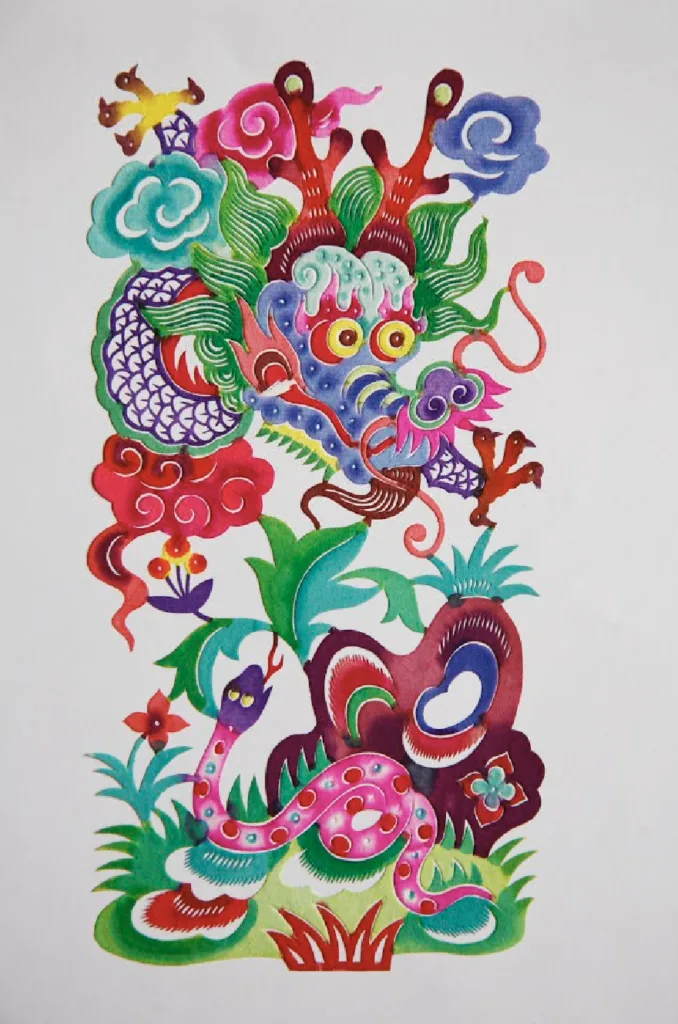
Your zodiac sign, determined by your birth year, is believed to shape your character and destiny. For instance, someone born in the year of the Tiger might be seen as courageous and competitive. When it comes to relationships, some animal signs are considered more compatible with others. Tigers, for instance, are thought to get along well with Horses and Dogs but may have a trickier time with Monkeys.
There’s also something called Ben Ming Nian, which is the year of your zodiac animal. It occurs every 12 years and is seen as a time of challenges and potential changes. To ward off bad luck during this year, people often wear the color red, which is considered lucky.
The Chinese Zodiac in Chinese Folk Art
But the Chinese Zodiac is more than just a way to tell time; it’s a source of inspiration for many traditional crafts in China. One of the most interesting is paper cutting, also known as ‘Jianzhi.‘ In this craft, artists take sheets of red paper (the luckiest color in China) and cut them into the shapes of the Zodiac animals and other auspicious symbols. The mythological animals are also used to create stuffed animals, traditional embroidery, and miniature decorative statues.
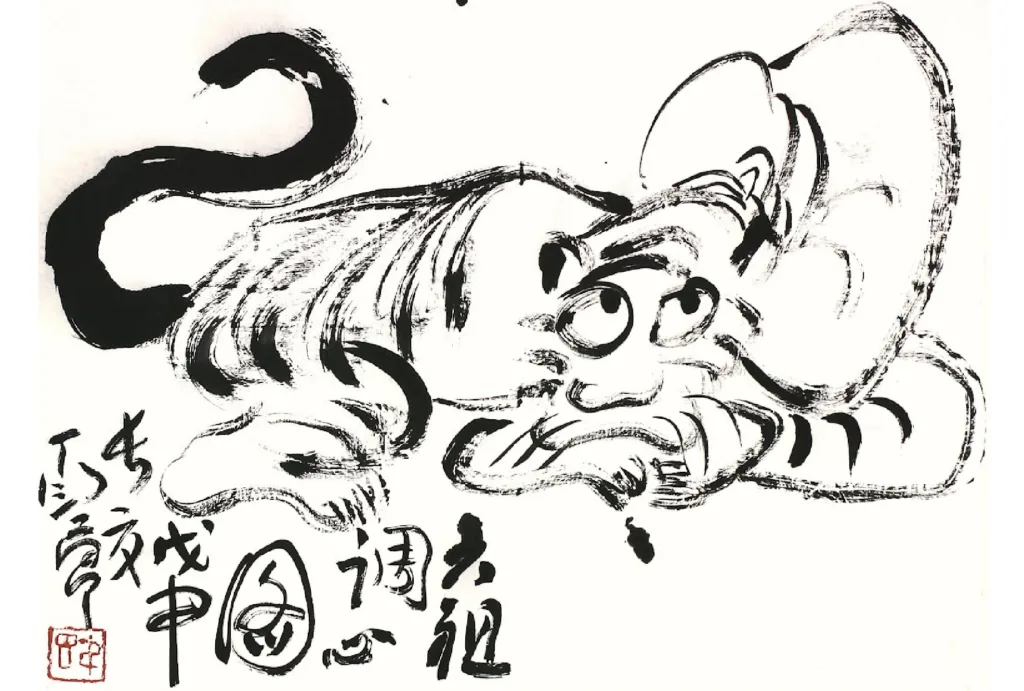
Chinese Folk art and Contemporary art
In Chinese art, there’s a fascinating contrast between folk art and literati, or classical art. Folk art is the creative expression of everyday people, crafted to meet their needs and reflect their experiences of ordinary life. It’s a communal art, not made by career artists but by the masses, especially rural female laborers. This art serves practical purposes in daily life, rituals, and ceremonies, and it’s deeply rooted in the community’s worldview, emotions, and cultural identity. It’s diverse, tied to specific nationalities and regions, and made with simple tools and materials.
In contrast, literati art is the realm of scholars, aristocrats, and professional artists. It often reflects more philosophical themes, like the unity of nature and humanity.
Contemporary Chinese art, emerging in the Communist era and influenced by Western modernism and post-modernism, often played on the interconnection or sometimes juxtaposition of these two art realms.

Ai Weiwei’s artwork, Circle of Animals, is an excellent example of this divide.
In this series, Ai Weiwei reimagines the traditional Chinese zodiac animal heads, originally part of a water clock fountain at the Old Summer Palace in Beijing, which were looted by Europeans during the Second Opium War.
This time around, the twelve animals are no longer a totem of traditional values and centuries-long traditions; instead, they become a powerful commentary on issues like cultural heritage, national identity, and the effects of colonialism.
What do you think? Have you tried introducing Chinese mythology in your classroom? Let me know in the comments below!


